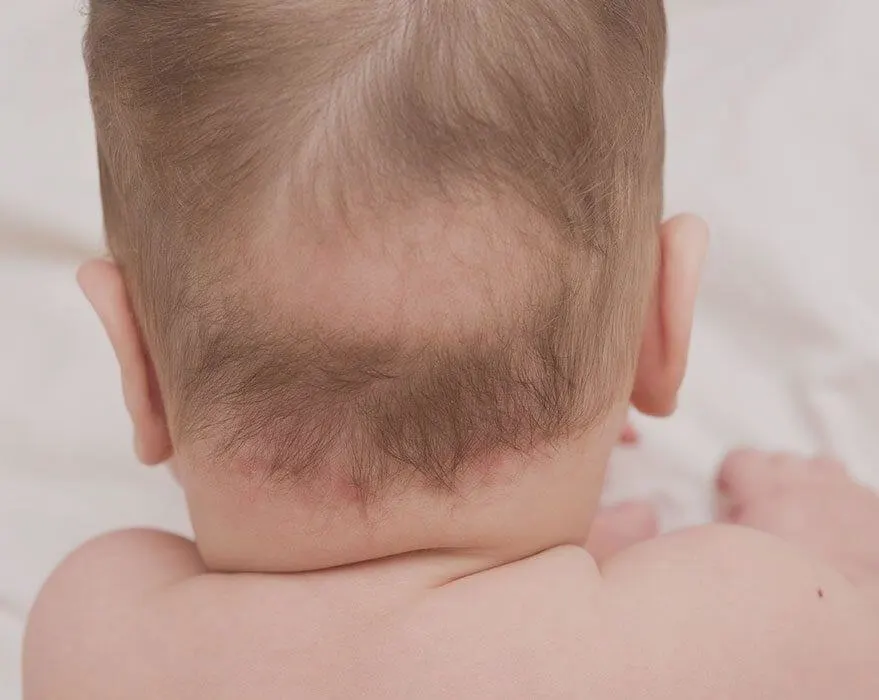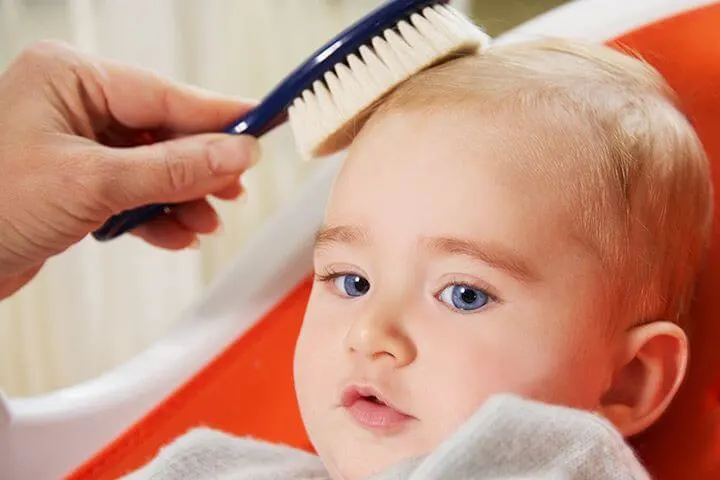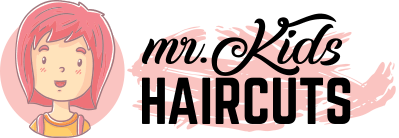Hair loss in kids is not so uncommon, but the causes behind it may not be the same as those of adult-onset baldness. Sometimes it happens due to a scalp disorder while on other occasions there are non-medical reasons responsible for it. Let’s find out in detail exactly what can cause hair loss in a child.
Medical Conditions That Can Lead To Hair Loss In A Child
The following medical conditions may contribute to hair loss in kids.
-
Scalp Ringworm

This contagious fungal skin infection is pretty common and causes a red-colored, ring-shaped rash on the scalp. Known commonly as Tinea Capitis, it urges kids to scratch their scalp which can eventually lead to hair loss in toddlers. Usually, this type of hair loss only happens in a couple of locations on top of the irritated and itchy skin. The doctors generally prescribe an antifungal cream for treating scalp ringworm. The hair grows again once the condition is relieved.
-
Alopecia Areata

Image : Shutterstock
It’s an autoimmune disease and contributes to hair loss in kids. Your hair follicles are attacked by the immune system in this case. Alopecia can be in various forms depending on your kids’ hair loss pattern. This includes:
- Alopecia Areata: there are bald patches on the scalp of the child
- Alopecia Totalis: the kids become completely bald as all their hair falls out
- Alopecia Universalis: the hair falls out from the entire body
Kids who develop alopecia areata tend to get completely bald over time. The condition is diagnosed by an examination of the kids’ scalp. The doctor may even remove some hair for microscopic examination.
Though no proven cure exists to treat alopecia areata, there are treatments available to help with hair regrowth. These could include:
- Corticosteroid cream, ointment, or lotion
- Anthralin
- Minoxidil
Hair re-growth is possible within a year if the kids are given the right treatment for alopecia areata.
-
Telogen Effluvium

It is the temporary loss of hair caused by an emotional or physical shock. There is a predictable schedule for hair growth. A hair can continue to grow for around 2-6 years in the anagen phase after which it goes into the telogen phase or “the rest period”. This phase continues for 2-4 months after which the hair falls out before being replaced by new hair. Telogen Effluvium is a condition in which more hair than usual enters the telogen phase and stays right there. This can possibly happen due to:
- Physical Injuries
- Infection or Fever
- Emotional Stress
- Surgery performed under general anesthesia
- Nutritional and vitamin imbalances
- Medications
Causes of Non-Medical Hair Loss
There are some non-medical reasons for hair loss as well. These can include:

-
Newborn Hair Loss
Most babies tend to lose hair during the first six months of their birth. The hair continues to fall out so that mature hair could grow. This is pretty normal and you shouldn’t worry about it at all.
-
Friction Hair Loss
Sometimes, babies tend to lose hair from the back of the scalp as they rub the head repeatedly against their crib mattress, the floor, or anything else. The hair grows back once this behavior is outgrown and they become more mobile.
-
Chemicals
Hair loss in toddlers can also result from products used to dye, perm, bleach, or straighten the kids’ hair. These products have harsh chemicals and can cause damage to the hair shaft. So, it’s best to avoid them to avoid hair loss.
-
Blow-Drying
Excessive heat from straightening or blow-drying can also cause hair damage and, eventually, hair loss.
-
Hair Ties
Tight ponytails, buns, and braids can also damage hair follicles. Hair loss due to brushing or combing too hard is also common. Such practices should be avoided to avoid hair loss.
So, if you are wondering what can cause hair loss in a child, all these above-mentioned reasons could be responsible for that. Try to avoid them where possible and seek necessary help if the hair loss happens.
